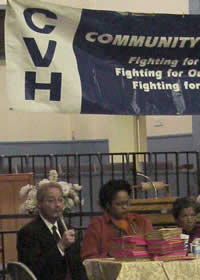 |
 |
One of the goals of integrated voter engagement work is to register and identify as many people as possible in a particular precinct, neighborhood or demographic and with repeated contact, ensure that they cast a ballot on Election Day. What do we mean by identify? It depends on the sort of campaign you’re working on. In an initiative campaign, voter ID means finding out if a voter plans to cast a ballot for your side. In a nonpartisan project, voter ID work involves getting a promise to vote from the people you contact, but it may also include issue identification and voter education.
But this type of voter engagement is just the beginning. Organizers enter the civic arena in order to strengthen their communities and lay the ground work for movement-building. This won't get accomplished with voter registration and ID alone.
Voters become members of your organization – and leaders in future electoral cycles – when they are informed about the issues and engaged in the work of the campaign on multiple levels. This is what it means to do integrated voter engagement.
When you contact a voter, ask them to volunteer for the campaign. There are many ways they can lend support, including: participating in voter registration/ID efforts, making sure their friends and family are registered and informed about the election, distributing campaigns signs and flyers, giving rides on Election Day, working as an interpreter and hosting informal issue and education meetings in their houses. You’ll learn more about strategies for effectively using volunteer power in the TechKit's Volunteer Management section.

If you’re doing non-partisan work, invite voters to participate in a public forum. There they can learn about candidates’ positions and directly question them on their priority issues. This is an excellent way of educating voters about the candidates without violating the rules that 501(c)(3) organizations must abide by in elections. The Native American Voters Alliance holds regular political forums and, as Bineshi Albert explains, policy makers are taking notice. To learn more about candidate forums, check out the Nonpartisan Messaging section.
Community Voices Heard found a creative way of engaging voters in the civic debate surrounding New York City's 2005 mayoral election. They launched an anti-candidate campaign,inviting community members to articulate the important issues that the candidates were failing to address. In the video, Henry Serrano describes the campaign and the benifits it held for the people who took part, and the electoral project itself.
Once everyone's had a chance to rest, invite volunteers to participate in evaluation sessions, accountability sessions with elected officials, and leadership development courses. These are the folks who will drive future electoral projects. Learn more about this in the Leadership Development section.